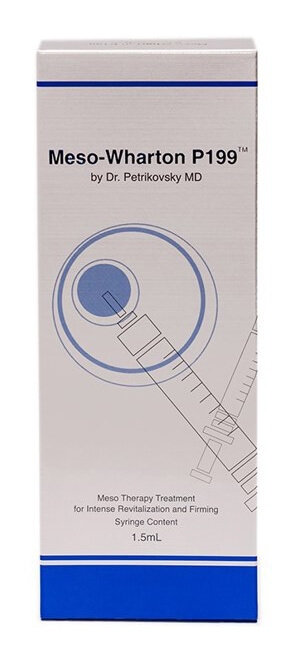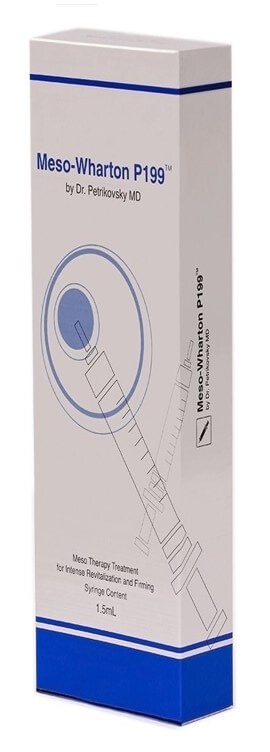Stretches – these are frequent skin lesions after pregnancy, athletes complain about them after active training with a change in muscle mass, fans of diets with significant weight fluctuations suffer from them. In all cases, the appearance of stretch marks is due to the rupture of collagen fibers from excessive stretching of the skin, and scars form at the site of tension, which manifest themselves as unaesthetic skin defects. Today, aesthetic medicine has the means and methods to correct this defect. How to remove stretch marks with fractional thermolysis and reinforce the effectiveness of the procedure with injections of Meso-Wharton P199™ from the official distributor «EMET», considered estet-portal.com.
How to remove stretch marks with hardware methods: the effectiveness of photothermolysis
Ruptures and delaminations of collagen fibers in the dermal layer usually occur on the abdomen, chest and thighs, sometimes on the shoulders and back. It is in these places that the skin experiences prolonged overstretching when gaining body weight, increasing muscle mass, or during pregnancy. As a result of a strong tension of the connective tissue over several weeks or months, the collagen fibers are torn, an atrophic defect of the dermis occurs. At the site of the breaks, thin superficial scars are formed – striae. The formation of stretch marks can be facilitated by hormonal fluctuations, due to which collagen synthesis is disrupted and the connective tissue loses its elasticity.
Fractional thermolysis is considered to be one of the most effective hardware effects that can destroy the densified collagen framework from damaged fibers and start neocollagenogenesis to form elastic connective tissue.
The essence of the fractional thermolysis procedure is that a thin laser beam is split into small fractions, each of which penetrates the skin and forms a thermal zone around itself – area of very high temperature. In this area, cells experience heat shock, coagulation occurs, destruction of old fibroblasts, exfoliated remnants of collagen fibers. Skin response becomes:
- increased production of fibroblasts;
- formation of new collagen and elastin fibers;
- epithelialization of the epidermis.
As a result of the procedure, scarring changes are gradually smoothed out, skin turgor improves.
In order to enhance the effect of the fractional thermolysis procedure, stimulate the cellular renewal of the dermal layer, grow "new" fibroblasts and affect cicatricial changes in the area of stretch marks, it is recommended to conduct a course of injections of Meso-Wharton P199™ in 1-2 weeks.

Adding injections: how to remove stretch marks by combining photothermolysis and Meso-Wharton P199™
The formation of atrophic scar tissue in the stretch marks zone largely depends on insufficiently rapid cell renewal, which is why new collagen fibers do not have time to be produced in the connective tissue when it is overstressed. Meso-Wharton P199™ will help restore the update.
When combined with fractional photothermolysis and Meso-Wharton P199™ hardware exposure helps to rid the dermal layer of destroyed and compacted remnants of collagen fibers, and the introduction of Meso-Wharton P199™ starts the processes of formation of young healthy cells, restoring firmness and elasticity to the connective tissue.
Stimulation of cell renewal occurs due to the unique Wharton Jelly Peptide P199™ polypeptide contained in the preparation. This polypeptide acts on dermal tissue-specific stem cells, creates optimal conditions for the proliferation and differentiation of the skin's own stem cells and activates them to synthesize new young fibroblasts and collagen fibers, respectively.
Meso-Wharton P199™ growth factors, as well as hyaluronic acid, amino acids, coenzymes, trace elements can significantly improve the texture of the skin, achieve its density and elasticity. The result of the combined effect on the skin of fractional photothermolysis and a course of injections of Meso-Wharton P199™ is:
- gradual replacement of atrophied areas of the dermis with normal healthy tissue – if the stretch marks are not old;
- reduction of manifestations of pigmentation in the area of stretch marks;
- good skin hydration and smoothness;
- significantly smoothed transition between stretch marks and healthy skin – with old stretch marks.
Studies of electron microscopy show that as a result of complex treatment of striae with fractional photothermolysis and injections of Meso-Wharton P199™ there is a more even distribution of collagen and elastin fibers in the dermal layer, as well as the appearance of new, young and healthy collagen fibers.
Thus, an integrated approach to treatment of stretch marks, using hardware techniques – fractional photothermolysis and injection procedures – Meso-Wharton P199™ allows you to effectively remove newly formed stretch marks and achieve successful aesthetic correction of old stretch marks, making this skin defect almost invisible.








Add a comment